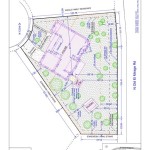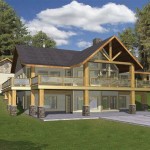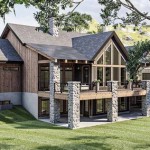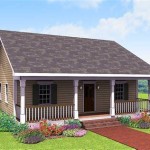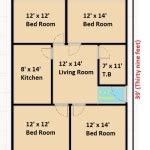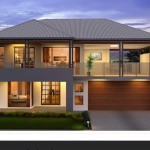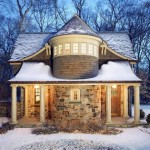Plans For Building A Bluebird Box: A Comprehensive Guide
Attracting bluebirds to residential areas offers numerous benefits, including natural insect control and the enjoyment of observing these vibrant birds. A fundamental step in achieving this goal is providing appropriate nesting sites as natural cavities are often limited. Constructing a bluebird box, specifically designed to meet their needs, is a practical and rewarding project. This article details the necessary plans and considerations for building a functional and safe bluebird box.
Proper dimensions are crucial for the bluebird box's effectiveness. Incorrect sizing or design can deter bluebirds or even attract unwanted species. The specific measurements directly impact the bluebird's ability to successfully nest and raise their young. A well-constructed box provides protection from predators and harsh weather conditions.
Essential Materials and Tools
The selection of appropriate materials is paramount to the longevity and functionality of the bluebird box. Untreated cedar, redwood, or pine are recommended due to their natural resistance to decay and insects. Avoid using pressure-treated lumber, as the chemicals used during the treatment process can be harmful to bluebirds. The ideal wood thickness is approximately ¾ inch, providing adequate insulation and structural integrity.
In addition to lumber, essential materials include galvanized nails or screws, which resist rusting and ensure the box remains securely assembled over time. A drill with various drill bits is necessary for creating pilot holes to prevent wood splitting during assembly. A saw, either hand-powered or electric, facilitates accurate cutting of the lumber according to the specified dimensions. A measuring tape or ruler ensures precise measurements, contributing to accurate construction. A screwdriver, hammer, and pencil are also necessary for general assembly and marking purposes. Finally, consider acquiring sandpaper to smooth any rough edges and prevent injuries to the birds.
For added protection and aesthetics, consider using exterior-grade paint or stain. Choose light colors such as beige or light gray, as dark colors can absorb excessive heat, potentially harming the nestlings. Ensure the chosen paint or stain is non-toxic and environmentally friendly to avoid harming the birds.
Bluebird Box Design and Construction
The standard dimensions for a bluebird box are as follows: a floor size of 5x5 inches, a height of 8 inches from the floor to the bottom of the entrance hole, and an entrance hole diameter of 1 ½ inches. These dimensions are specifically tailored to accommodate bluebirds while discouraging larger birds such as starlings from entering. The roof should extend beyond the front of the box by at least 2 inches to provide protection from rain and sun. The roof should also be slightly slanted to allow for water runoff.
The construction process begins with cutting the lumber according to the specific dimensions. Use accurate measurements and precise cuts to ensure the box fits together properly. Drill pilot holes before driving in nails or screws to prevent the wood from splitting. Assemble the sides, front, and back of the box, ensuring they are flush and secure. Attach the bottom piece, leaving small drainage holes in the corners to prevent water accumulation. Hinge the roof to allow for easy access for monitoring and cleaning. A simple latch can be added to keep the roof securely closed.
The entrance hole is a critical component of the bluebird box. The 1 ½ inch diameter is essential for attracting bluebirds and excluding larger, more aggressive birds. Position the entrance hole approximately 6 inches above the floor of the box. Avoid adding a perch below the entrance hole, as this can assist predators in accessing the box. A grooved or roughened interior surface below the entrance hole can aid fledglings in climbing out of the box.
Ventilation is crucial for maintaining a comfortable temperature inside the bluebird box, especially during hot weather. Drill small ventilation holes near the top of the sides or the roof to allow for air circulation. Proper ventilation helps prevent overheating and reduces the risk of nestlings becoming dehydrated. Ensure the ventilation holes are small enough to prevent insects from entering.
Consider adding a predator guard to the bluebird box to protect the eggs and nestlings from snakes, raccoons, and other predators. A simple baffle can be constructed from sheet metal or PVC pipe and attached to the pole supporting the box. The baffle should be at least 18 inches in diameter and positioned approximately 4 feet above the ground.
Optimal Placement and Maintenance
The location of the bluebird box significantly impacts its attractiveness to bluebirds. Choose an open area with short grass or bare ground, as bluebirds prefer to forage in these environments. Avoid placing the box in heavily wooded areas or areas with dense vegetation, as these habitats are less appealing to bluebirds. Position the box away from buildings and human activity, as excessive disturbance can deter bluebirds from nesting.
Install the bluebird box on a sturdy pole or post, approximately 5 to 6 feet above the ground. Ensure the pole is securely anchored in the ground to prevent the box from swaying in the wind. Orient the entrance hole away from prevailing winds and direct sunlight to provide protection from the elements. Consider placing the box near a tree or shrub where fledglings can perch after leaving the nest.
Regular monitoring and maintenance are essential for ensuring the health and safety of the bluebirds. Check the box periodically during the nesting season to monitor the progress of the nest and identify any potential problems. Remove any invasive species, such as house sparrows, that may attempt to nest in the box. Clean the box thoroughly after each nesting season to remove old nesting material and prevent the buildup of parasites and diseases. This is typically done in late summer or early fall after the bluebirds have finished nesting.
When cleaning the bluebird box, wear gloves and a mask to protect yourself from any potential diseases or parasites. Remove all nesting material and debris from the box. Scrub the interior of the box with a brush and a mild disinfectant solution. Rinse the box thoroughly with water and allow it to dry completely before reattaching the roof. Inspect the box for any damage, such as cracks or loose joints, and make any necessary repairs. By adhering to these guidelines, individuals can create a safe and inviting nesting environment for bluebirds, actively contributing to their conservation and enjoyment.

Bluebird Nest Box Plans Easy Diy Project

Bluebird Birdhouse Plans Complete Step By Instructions For Building A Bird House

Blue Bird House Plans Free Diy Kits

How To Make A Diy Bluebird House Birds And Blooms

Eastern Bluebird Birdhouse 70birds Plans Index

Bluebird Nest Box Plans To Build From Scraps

May 2024 Bird House Plans Bluebird Free

How To Build An Inexpensive Eastern Bluebird House

How To Build A Bluebird House With Pictures Wikihow

Bluebird Birdhouse Plans Complete Step By Instructions For Building A Bird House
Related Posts


